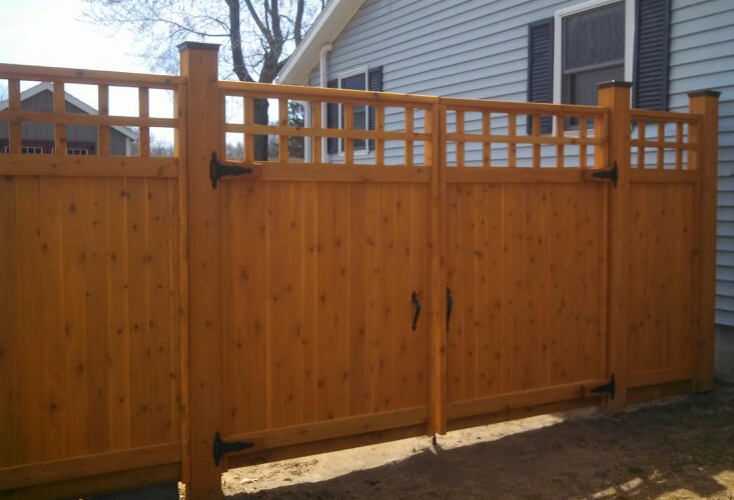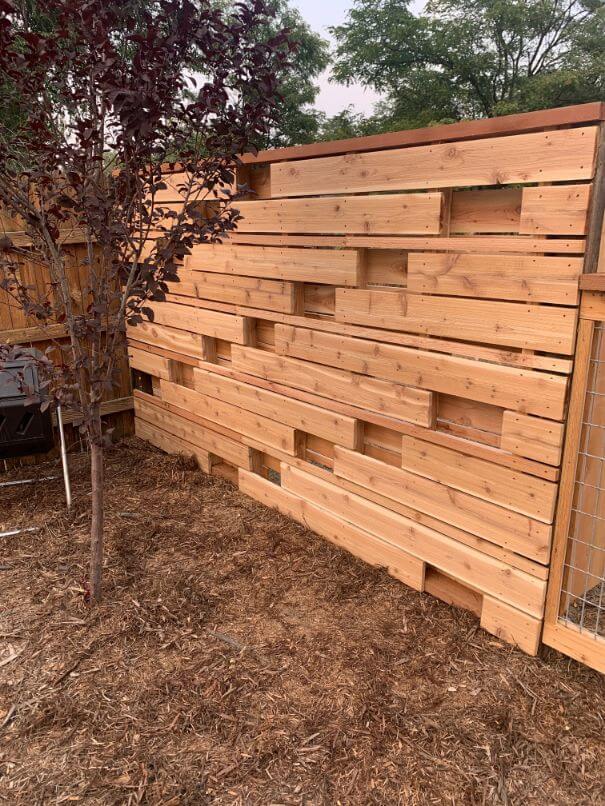All Categories
Featured
Your fencing is one of the most reviewed components of your property, constantly dealing with the obstacles of changing climate problems. Whether it's solid winds, heavy rainfall, or severe warm, weather condition can trigger substantial damages to your fencing, leading to expensive repair services and even a complete substitute. There are a number of strategies you can execute to protect your fence and prolong its life-span. Below are some functional tips to guard your fencing from weather-related damages.
Vinyl Fencing: Plastic is very sturdy and immune to dampness, decomposing, and bending. It likewise needs little maintenance and can withstand severe climate condition without fading or breaking. Metal Fence: Wrought iron or aluminum fences are strong and durable versus wind and rain. They are vulnerable to rust over time if not correctly shielded. Applying a rust-resistant layer can aid protect their look and stability. Composite Secure Fencing: Made from a mix of timber fibers and plastic, composite fencings combine the ideal top qualities of both materials. They're resistant to pest, rot, and degeneration damage while using the look of all-natural timber. By choosing the best material, you can make sure that your fencing is better furnished to hold up against the components.
Moisture Defense: Sealants create a waterproof obstacle, avoiding rain from permeating into the timber and causing rot or mildew. UV Protection: Spots and sealants obstruct UV rays, which can dry out and blemish the wood. Protect Appearance: Routinely using a safety finish will certainly maintain the fencing's natural elegance and prevent staining or fading. To make certain durable defense, reapply sealer or discolor each to 2 years, depending upon your environment and fence wear.
![]()
![]()
Furthermore, cleaning your fence can aid eliminate dirt, mildew, and particles that can create long-term damage. For wood fencings, delicately pressure wash the surface to remove crud, while plastic fences can be cleansed with a moderate detergent service.
Verdict. Your fencing is a valuable financial investment that supplies safety, privacy, and aesthetic appeal to your residential or commercial property. By taking aggressive actions to secure it from weather-related damages, you can ensure its longevity and maintain its performance. Whether you're choosing the ideal materials, using safety finishes, or reinforcing blog posts, these basic approaches can aid shield your fence from the aspects, conserving you cash and prolonging the lifespan of your fence for years to find. Routine examinations and upkeep are vital to capturing problems early, so make sure to remain on top of your fence's treatment throughout the periods.
- Pick Weather-Resistant Products. Among the initial steps in securing your fence from weather-related damages is selecting the best product. Some materials are normally extra immune to the elements, minimizing the need for consistent repair work. :
Vinyl Fencing: Plastic is very sturdy and immune to dampness, decomposing, and bending. It likewise needs little maintenance and can withstand severe climate condition without fading or breaking. Metal Fence: Wrought iron or aluminum fences are strong and durable versus wind and rain. They are vulnerable to rust over time if not correctly shielded. Applying a rust-resistant layer can aid protect their look and stability. Composite Secure Fencing: Made from a mix of timber fibers and plastic, composite fencings combine the ideal top qualities of both materials. They're resistant to pest, rot, and degeneration damage while using the look of all-natural timber. By choosing the best material, you can make sure that your fencing is better furnished to hold up against the components.
- Protect Wood Fencings with Sealers and Stains. Wood fences are especially susceptible to dampness, UV rays, and severe temperatures. To protect your wood fence from these issues, using a high-grade wood sealer or stain is vital.
Moisture Defense: Sealants create a waterproof obstacle, avoiding rain from permeating into the timber and causing rot or mildew. UV Protection: Spots and sealants obstruct UV rays, which can dry out and blemish the wood. Protect Appearance: Routinely using a safety finish will certainly maintain the fencing's natural elegance and prevent staining or fading. To make certain durable defense, reapply sealer or discolor each to 2 years, depending upon your environment and fence wear.

- Strengthen the Fence Posts. Fencing messages are specifically prone to moving and damaging as a result of weather. Wind, rain, and even freeze-thaw cycles can cause articles to lean or loosen up in time. To stop this, take into consideration enhancing your fencing articles by setting up concrete grounds or utilizing stronger materials for article supports. If you reside in a location with hefty winds or seasonal frost, this included security will assist safeguard your fencing from damage.
- Cut Surrounding Vegetation. Tree branches and vines expanding near or over your fencing can cause considerable damage in rainy climate. Not just will this shield your fencing, however it will certainly additionally improve the general look of your yard.
- Use Windbreaks. Wind is a major consider weather-related fence damage. Strong gusts can compromise or even fall fencings, specifically if they're high or otherwise properly enhanced. One way to decrease wind impact is by setting up a windbreak. This can be as easy as planting bushes or trees near your fence or establishing a mesh screen. A windbreak serves as an obstacle that lowers the straight effect of wind on the fencing, protecting against damages from high winds and gusts.

- Address Drainage Issues. Poor drainage is a major factor to fencing damages, specifically for wooden fencings. Water that collects around the base of fencing articles can trigger them to rot over time.
- Normal Assessments and Maintenance. Regular maintenance is essential for safeguarding your fencing from weather condition damages. Inspect your fence regularly, especially after serious weather condition events, to determine any type of indications of damage.
Furthermore, cleaning your fence can aid eliminate dirt, mildew, and particles that can create long-term damage. For wood fencings, delicately pressure wash the surface to remove crud, while plastic fences can be cleansed with a moderate detergent service.
- Apply a Rust-Resistant Covering to Steel Fences. Steel fencings, especially those made of iron or steel, are vulnerable to corrosion when subjected to dampness and humidity. To protect your metal fence from corrosion, use a rust-resistant finishing or paint. Ensure that the finish is developed for exterior usage and can withstand the components. Sand them down and paint the affected areas to stop more corrosion. if you discover any kind of rust places.
Verdict. Your fencing is a valuable financial investment that supplies safety, privacy, and aesthetic appeal to your residential or commercial property. By taking aggressive actions to secure it from weather-related damages, you can ensure its longevity and maintain its performance. Whether you're choosing the ideal materials, using safety finishes, or reinforcing blog posts, these basic approaches can aid shield your fence from the aspects, conserving you cash and prolonging the lifespan of your fence for years to find. Routine examinations and upkeep are vital to capturing problems early, so make sure to remain on top of your fence's treatment throughout the periods.
Latest Posts
Why Regular Vehicle Maintenance at Montclare Auto Repair Keeps Your Wallet Happy
Published May 29, 25
1 min read
Discover the Greatest Auto Repair Deals in Montclare, Chicago
Published May 26, 25
1 min read
Experience Yesterday's Pub: Where Taste Fulfills Custom
Published May 22, 25
1 min read
More
Latest Posts
Why Regular Vehicle Maintenance at Montclare Auto Repair Keeps Your Wallet Happy
Published May 29, 25
1 min read
Discover the Greatest Auto Repair Deals in Montclare, Chicago
Published May 26, 25
1 min read
Experience Yesterday's Pub: Where Taste Fulfills Custom
Published May 22, 25
1 min read